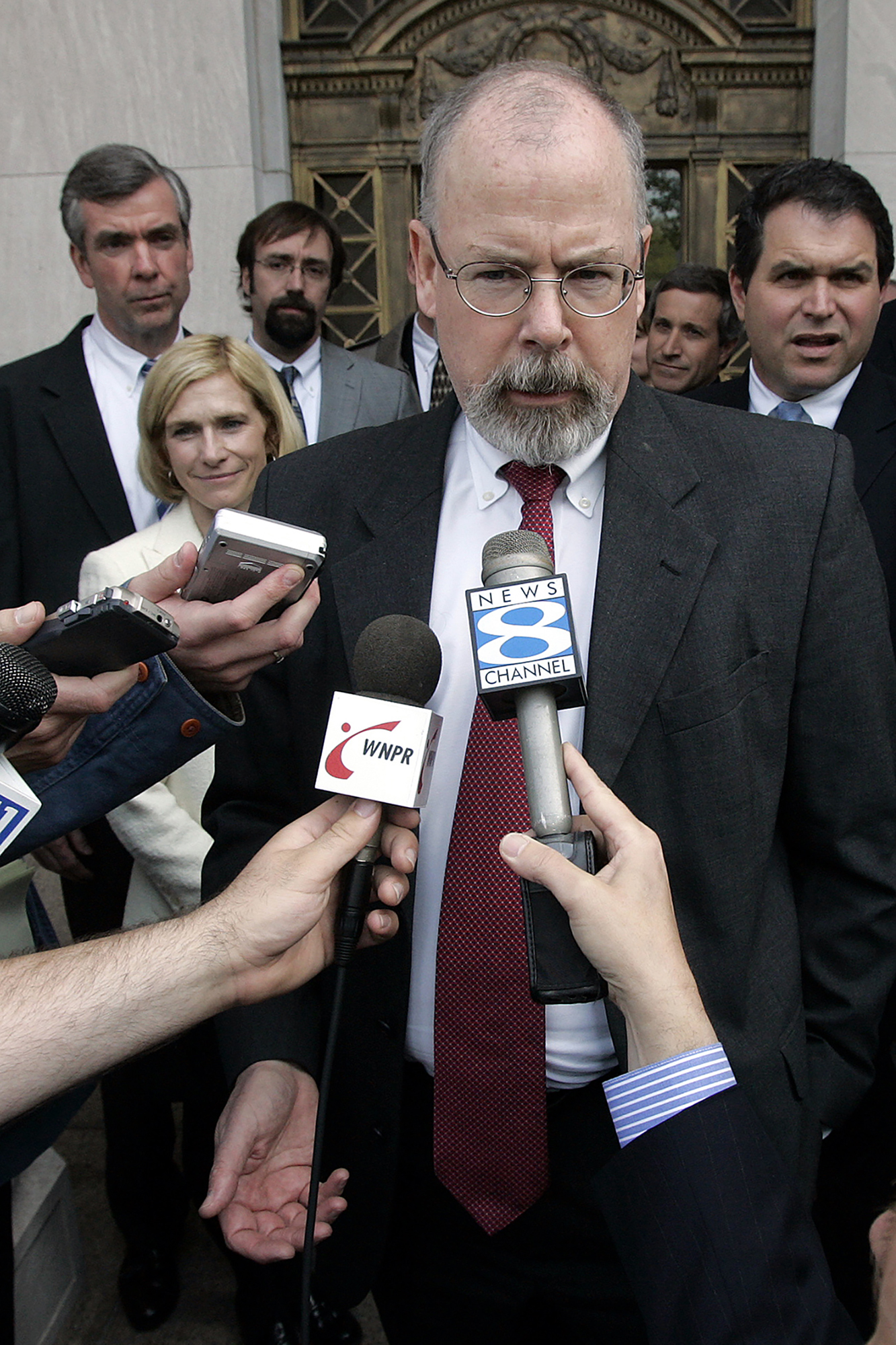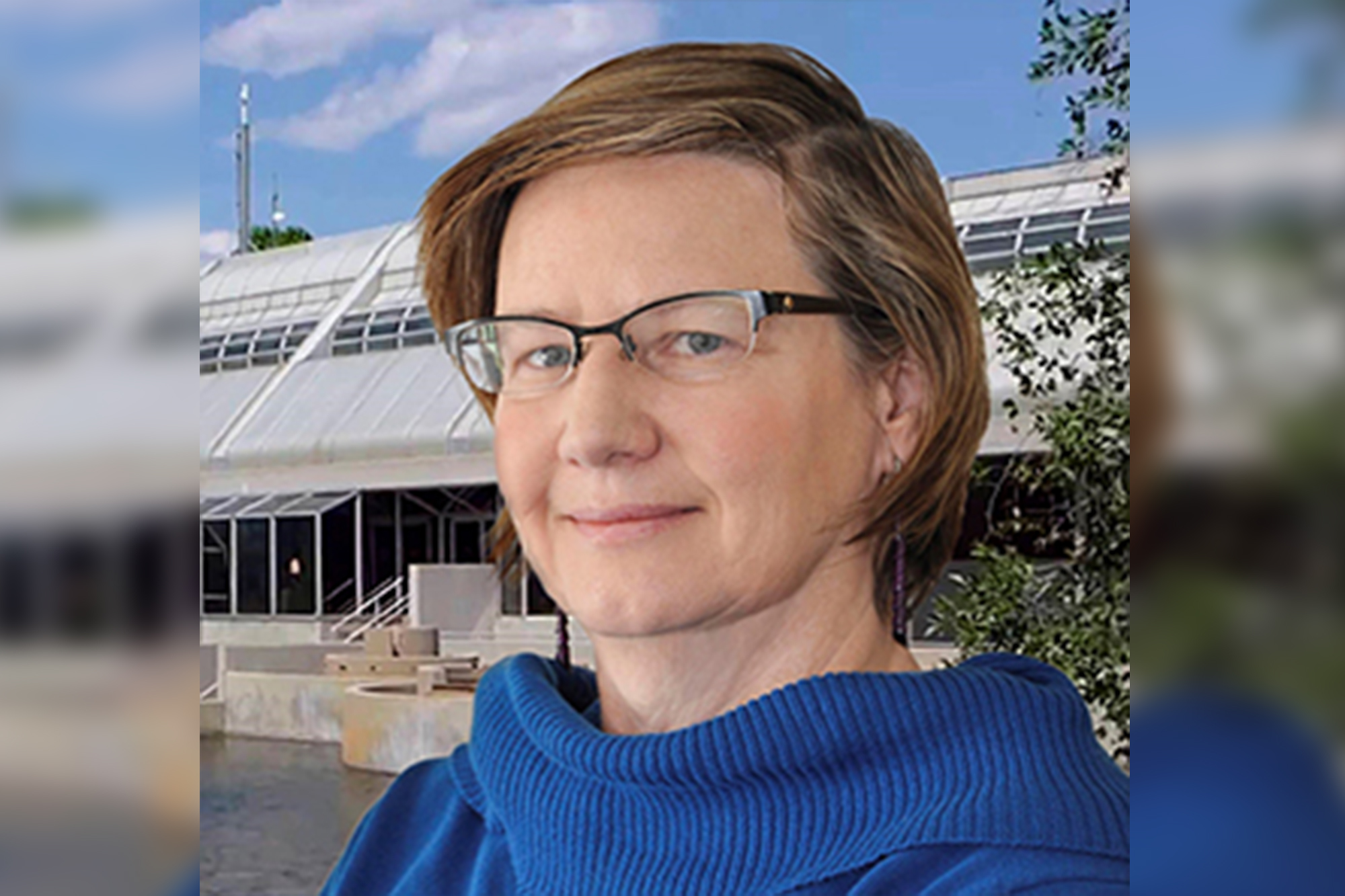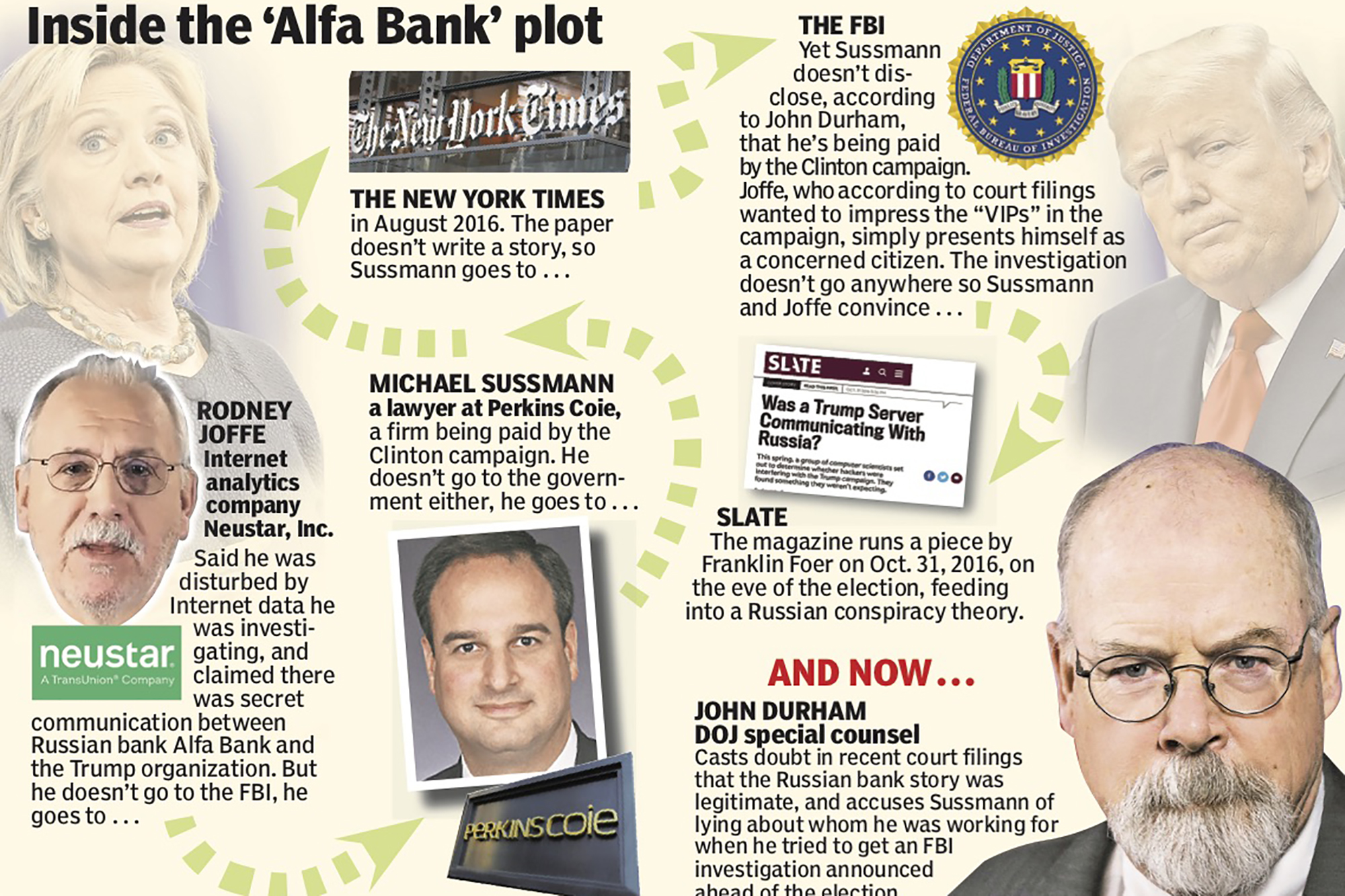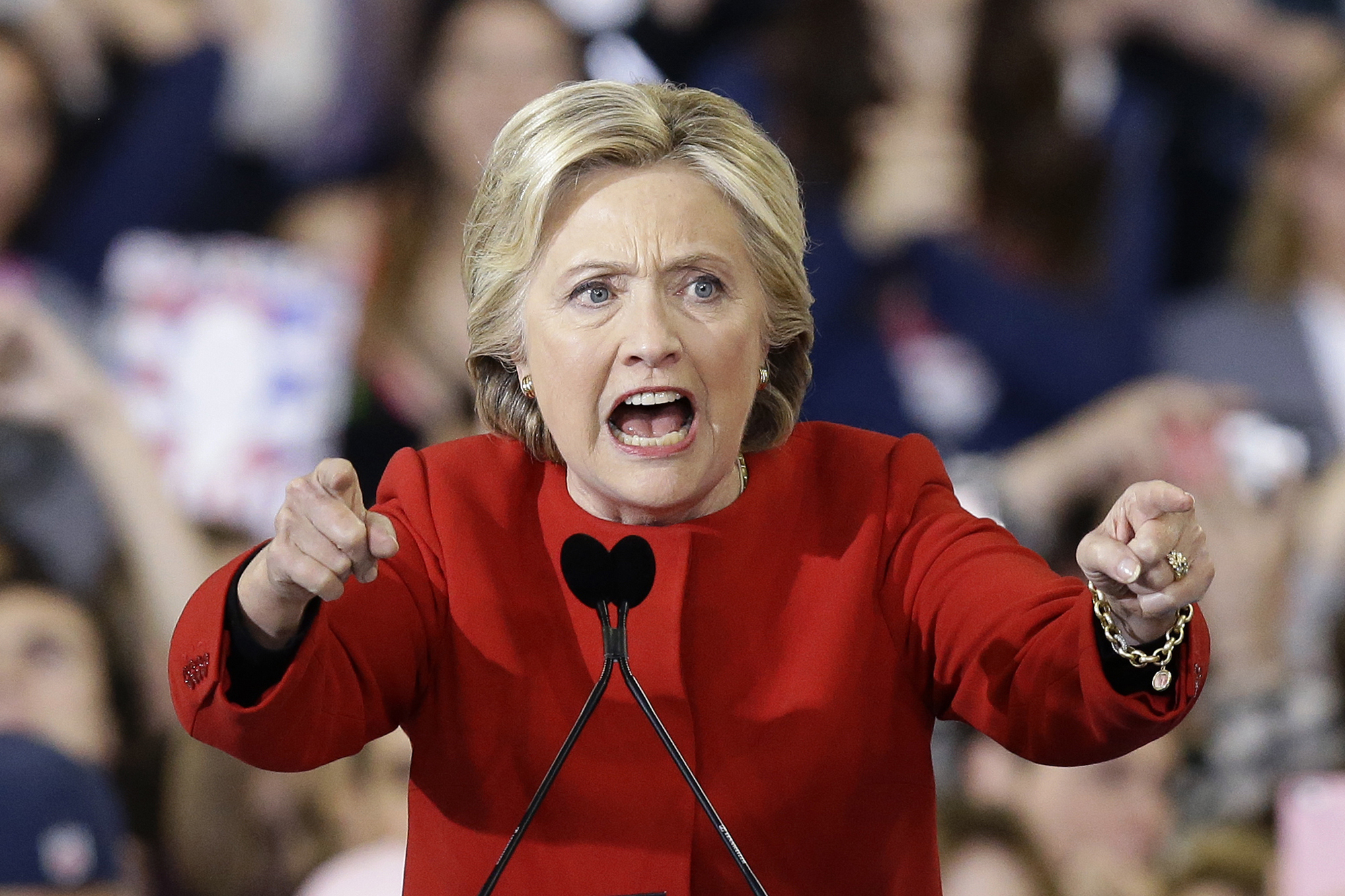More On: Giuliani
Rudy Giuliani was reportedly hit with ethics charges because of allegations of voter fraud
Truth about Trump's cyberassassins
Durham claims there is 'no basis' to remove the 'factual background' from the submission and rejects any desire to 'politicize' the Sussmann case
'I have it in my bedroom,' Giuliani teases, referring to evidence that Hillary Clinton's campaign spied on Trump
Modeling photos emerge of Mellissa Carone 'Mediterranean' as she prepares to be the star witness in in Hail Mary SCOTUS bid to topple Biden's victory
The usual suspects are now rallying behind the technological "experts" who spied on Donald Trump. If their defense seems stale, it's because we've seen it all before. It's all very Christopher Steele.
Last year, special counsel John Durham shattered Mr. Steele's credibility by establishing that the paid-for-hire agent had relied on fabrications for the notorious dossier utilized by the FBI in its Trump investigation. The special counsel is also demolishing the Alfa Bank story, the second major allegation of Trump-Russia "collusion." The press and others are lining up for another humiliation, despite the fact that the alarming activities of the producers of the Alfa story are already so easily documented, and in their own words.
The Alfa story began in October 2016, when Slate's Franklin Foer was duped into believing that a largely anonymous "benevolent posse" of "computer scientists" "spurred by a sense of shared idealism" had discovered data revealing secret communications between the Trump Organization and Russia-based Alfa Bank.
Cybersecurity professionals instantly ridiculed the data as nonsense, and the FBI dismissed it, but the liberal media kept it alive. In October 2018, the New Yorker’s Dexter Filkins devoted a 7,600-word panegyric to the “self-appointed guardians of the Internet” who continued to flog the claims.

Durham indicates in recent court documents that these IT specialists, including Rodney Joffe, formerly of Neustar, Inc., were working with the same group as Steele and following the same plan.
They collaborated with Democratic law firm Perkins Coie and opposition research company Fusion GPS to gather "derogatory" material on Trump that would delight "VIPs" in the Clinton campaign. According to the Durham indictment, the techies did so in part by mining protected Internet data provided to a government contractor, enabling them to eavesdrop on the White House, Trump Tower, and Trump's Manhattan residence.
Joffe's legal team maintains that he is "apolitical" and was unaware that his attorney, Michael Sussmann, was paying Team Clinton. (In September, a grand jury appointed by Durham indicted Sussmann on a charge of providing a false statement to the FBI.) Sussmann entered a not-guilty plea.) The press originally attempted to ignore the subject, but eventually resorted to analyzing the concept of "spying," defending the accused, and slamming Durham.
The difficulty for the last-ditch defenders is that the techies they want to rescue have already said too much on the record that implies their main fear was a Trump presidency rather than national security.
Begin with the "apolitical" Joffe's business. Paul Vixie, one of his coworkers participating in the project and mentioned in the Sussmann indictment, has a lengthy record of leftist, anti-Trump comments on Twitter. L. Jean Camp, an Indiana University computer-science professor and Clinton supporter who has called on Americans to join the "resistance" against Trump, is another member of the circle who has taken up the task of disseminating the Joffe data.

So much for the media's portrayal of a group of politically innocuous geeks.
The researchers allege that by July 2016, they were concerned about the security implications of their data, which was derived from government records. Nonetheless, they did not approach the government. Joffe instead went to Democrats, namely Sussmann, a Perkins Coie lawyer who was often named in the news as a counsel for the Democratic National Committee throughout the summer of 2016.
The Sussmann indictment mentions a meeting Joffe held with Marc Elias, the Clinton campaign's Perkins Coie attorney. In addition, according to a deposition taken by a Fusion GPS employee as part of the ongoing Alfa Bank action, Joffe met with Peter Fritsch, a co-founder of Fusion GPS. Was he still perplexed about the partisanship of this project?

He couldn't possibly have been two years later. By that time, Perkins Coie and Fusion's responsibilities in passing information to the FBI for Clinton were widely known, and Fusion had gone on to hook up with former Democratic aide Dan Jones to continue pushing the charges.
Joffe sat for the October 2018 New Yorker story that pushed the Alfa accusations, identifying himself anonymously as "Max" and stating in the piece that he'd continued to aid that effort even after the election, supplying Jones's team with 37 million Internet data to analyse. (According to a deposition in the Alfa case, Joffe was Max.)
Here's the most eye-opening part: "Max" also told the New Yorker how critical it was in 2016 to ensure that the danger his team detected was "recognized before the election." That is why he and his lawyer initially went to the press with their knowledge.

According to the Sussmann indictment, Sussmann attempted to sell the data to the New York Times in late August 2016. He didn't contact the FBI until mid-September. A spokesman for Joffe refused to comment.
Steele's apologists likewise spent years maintaining that the opposition researcher was neutral and his work was beyond reproach - only to be humiliated. The media is venturing out once again at its risk. There's already lot to show for an unpleasant narrative — and Durham will almost certainly have plenty more to show for it.
From The Wall Street Journal






















